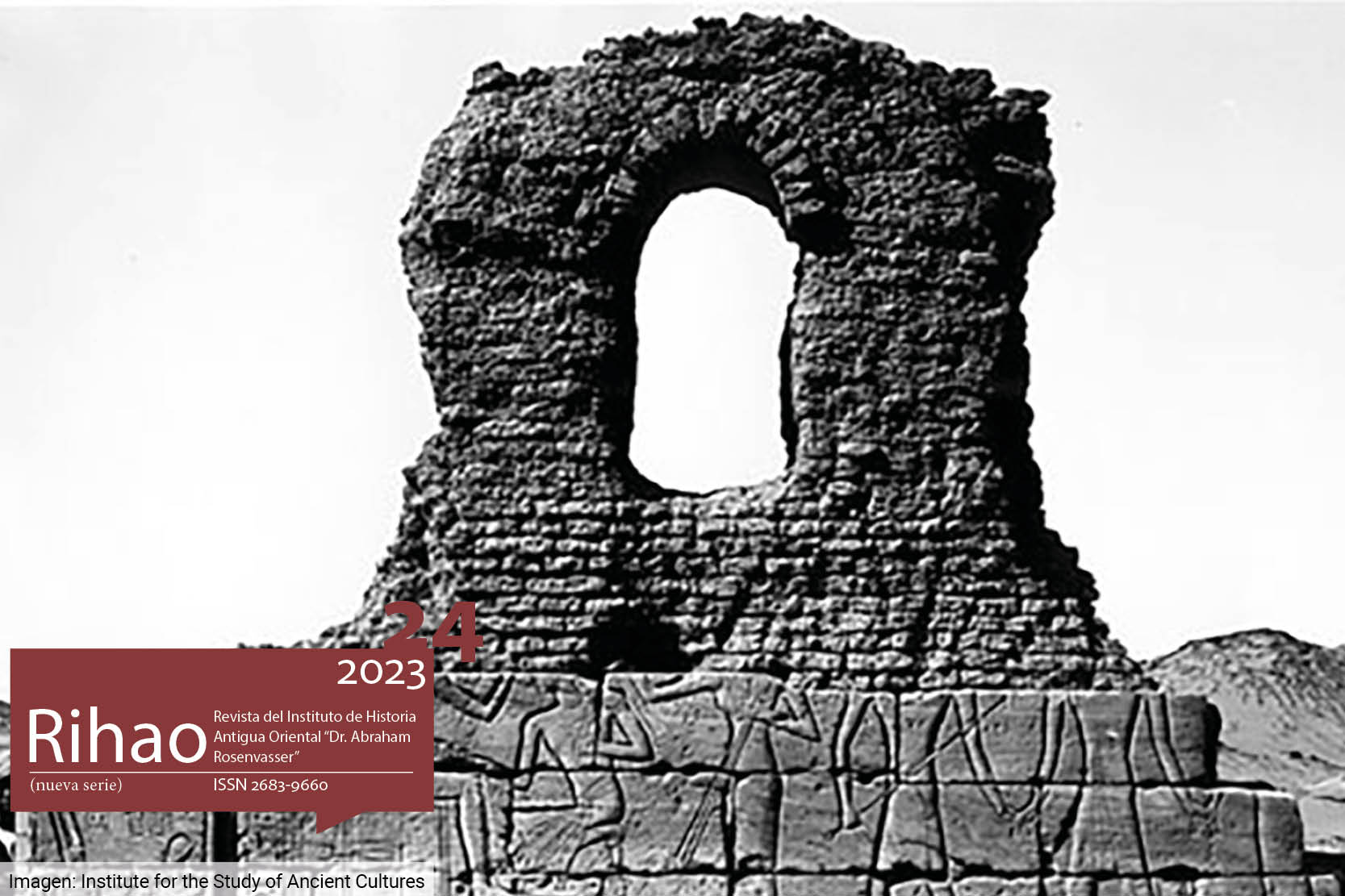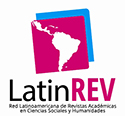The Forgotten Valley. The Crisis of a Paradigm on the Valley of the Cache of Royal Mummies in Luxor
Keywords:
archaeology, cachette, royal mummies, Luxor
Abstract
Following the discovery of the royal mummies in 1881 and the excavation campaign by Ambrose Lansing in 1920, the Royal Cachette Wadi has been considered a space archaeologically empty, specially due to its interpretation as secret and hiding place from the very moment of discovery. Starting in 2017, the C2 Project of the Universidad Complutense de Madrid (Spain) and the Center for the Study of Ancient Egypt (Egypt) has carried out four campaigns in this wadi. Its results let us put into question the validity of the mentioned conception of the valley. Outside of the tomb TT 320, some structures and a cultic area marked by the presence of a torn down monumental effigy, prayers, names of priests and leftovers of offerings have been identified. Common to these elements and others present in the wadi is a rocky step of geological formation but used by humans. The archaeoastronomical observations made in the wadi make it possible to start to understand the reasons for its usage and its relationship to all the identified elements.Downloads
Download data is not yet available.
References
Belmonte, J. A., Shaltout, M. y Fekri, M. (2009). Astronomy, Landscape and Symbolism: A Study of the Orientation of Ancient Egyptian Temples, en: Belmonte, J. A. y Shaltout, M. (eds.), In Search of Cosmic Order: Selected Essays on Egyptian Archaeoastronomy. El Cairo: Supreme Council of Antiquities Press, 213-284.
Bickerstaffe, D. (2010). The History of the Discovery of the Cache, en: Graefe, E. y Belova, G. (eds.), The Royal Cache TT320: A Re-Examination. El Cairo: Supreme Council of Antiquities Press, 13-36.
Cavillier, G. (2018). The Butehamon Project. Researches on a Royal Scribe in Theban Necropolis. Volume I: The Sources. Turín: Kemet edizioni.
Černý, J. (1956). Graffiti Hiéroglyphiques et Hiératiques de la Nécropole Thébaine. Nos 1060 à 1405. El Cairo: Institut Français d’Archéologie Orientale.
Černý, J. et al. (1969-1983). Graffiti de la Montagne Thébaine. El Cairo: Centre de Documentation et d’Études sur l’Ancienne Égypte.
Hassan, S. (1953). The Great Sphinx and Its Secrets. Historical Studies in the Light of Recent Excavations. El Cairo: Government Press.
Hölzl, R. (2002). Ägyptische Opfertafeln und Kultbecken. Eine Form- und Funktionsanalyse für das Alte, Mittlere und Neuere Reich. Hildesheim: Gerstenberg.
Lansing, A. (1920). Excavations at Thebes, 1918-19, en: The Metropolitan Museum of Art Bulletin 15 (12): 4-12.
Maspero, G. (1881). Le trouvaille de Deir-el-Bahari. El Cairo: Imp. Française F. Mourés & Cia.
Niwiǹski, A. (1984). Butehamun - Schreiber der Nekropolis, en: Studien zur Altägyptischen Kultur 11: 135-156.
Peet, T. E. (1930). The Great Tomb-Robberies of the Twentieth Egyptian Dynasty. I Text, II Plates: Being a Critical Study, with Translations and Commentaries, of the Papyri in Which These Are Recorded. Oxford: Provost & Fellows of Worcester College at the Clarendon Press.
Pérez-Accino, J. R. (2021a). Con Sekhmet en Año de Peste: Arqueología en Egipto en tiempos de la Covid-19, en: Boletín de la Asociación Española de Egiptología 29: 191-198.
Pérez-Accino, J. R. (2021b). C2 Project: Royal Cache Wadi Survey, en: Investigación Arqueológica Española en Egipto: Museo de Almería: 4 de noviembre 2021 - 30 de enero 2022. Sevilla: Consejería de Cultura y Patrimonio Histórico, Junta de Andalucía, 156-169.
Pérez-Accino, J. R. (2022). La dama de la montaña/The Lady of the Mountain, en: Hijas del Nilo. Mujer y sociedad en el Antiguo Egipto (Catálogo de la exposición). Madrid: Grupo Eulen.
Pérez-Accino, J. R. y Elleithy, H. (2019). C2 Project. The Royal Cache Wadi Survey. 2017 Season, en: Molinero, M. A., Díaz-Iglesias, L., Villar, A., Méndez-Rodríguez, D., Fernanz, C. y Pérez-Accino, J. R. (eds.), Horizonte y perspectiva. Trabajos de campo. Trabajos de Egiptología-Papers on Ancient Egypt (TdE) 8: 305-314.
Pérez-Accino, J. R. y Elleithy, H. (2023). Graffiti as Representation of Archaeological Features in the Royal Cache Wadi, en: Polkowsky, P. L. (ed.), Stone Canvas. Towards a better integration of Rock Art and Graffiti Studies in Egypt and Sudan. Bibliothèque d’Etude 183: 253-266.
Pérez-Accino, J. R y Vivas, I. (2023). An Intriguing Feminine Figure in the Royal Cachette Wadi: New Findings from the C2 Project, en: Ayad, M. (ed.), Women in Ancient Egypt. Revisiting Power, Agency and Authonomy. El Cairo: AUC Press, 87-100.
Pérez-Accino, J. R., Manley, W. y Elleithy, H. (2023). A token of Friendship in the Royal Cache Wadi, en: Egyptian Archaeology 62: 18-21.
Sousa, R., Amenta, A. y Cooney, K. M. (eds.) (2020). Bab El-Gasus in Context: Rediscovering the Tomb of the Priests of Amun. Roma / Bristol: “L’Erma” di Bretschneider.
Spiegelberg, W. (1921). Ägyptische und andere Graffiti (Inschriften und Zeichnungen) aus der thebanischen Nekropolis. Heidelberg: C. Winters Universitätsbuchhandlung.
Bickerstaffe, D. (2010). The History of the Discovery of the Cache, en: Graefe, E. y Belova, G. (eds.), The Royal Cache TT320: A Re-Examination. El Cairo: Supreme Council of Antiquities Press, 13-36.
Cavillier, G. (2018). The Butehamon Project. Researches on a Royal Scribe in Theban Necropolis. Volume I: The Sources. Turín: Kemet edizioni.
Černý, J. (1956). Graffiti Hiéroglyphiques et Hiératiques de la Nécropole Thébaine. Nos 1060 à 1405. El Cairo: Institut Français d’Archéologie Orientale.
Černý, J. et al. (1969-1983). Graffiti de la Montagne Thébaine. El Cairo: Centre de Documentation et d’Études sur l’Ancienne Égypte.
Hassan, S. (1953). The Great Sphinx and Its Secrets. Historical Studies in the Light of Recent Excavations. El Cairo: Government Press.
Hölzl, R. (2002). Ägyptische Opfertafeln und Kultbecken. Eine Form- und Funktionsanalyse für das Alte, Mittlere und Neuere Reich. Hildesheim: Gerstenberg.
Lansing, A. (1920). Excavations at Thebes, 1918-19, en: The Metropolitan Museum of Art Bulletin 15 (12): 4-12.
Maspero, G. (1881). Le trouvaille de Deir-el-Bahari. El Cairo: Imp. Française F. Mourés & Cia.
Niwiǹski, A. (1984). Butehamun - Schreiber der Nekropolis, en: Studien zur Altägyptischen Kultur 11: 135-156.
Peet, T. E. (1930). The Great Tomb-Robberies of the Twentieth Egyptian Dynasty. I Text, II Plates: Being a Critical Study, with Translations and Commentaries, of the Papyri in Which These Are Recorded. Oxford: Provost & Fellows of Worcester College at the Clarendon Press.
Pérez-Accino, J. R. (2021a). Con Sekhmet en Año de Peste: Arqueología en Egipto en tiempos de la Covid-19, en: Boletín de la Asociación Española de Egiptología 29: 191-198.
Pérez-Accino, J. R. (2021b). C2 Project: Royal Cache Wadi Survey, en: Investigación Arqueológica Española en Egipto: Museo de Almería: 4 de noviembre 2021 - 30 de enero 2022. Sevilla: Consejería de Cultura y Patrimonio Histórico, Junta de Andalucía, 156-169.
Pérez-Accino, J. R. (2022). La dama de la montaña/The Lady of the Mountain, en: Hijas del Nilo. Mujer y sociedad en el Antiguo Egipto (Catálogo de la exposición). Madrid: Grupo Eulen.
Pérez-Accino, J. R. y Elleithy, H. (2019). C2 Project. The Royal Cache Wadi Survey. 2017 Season, en: Molinero, M. A., Díaz-Iglesias, L., Villar, A., Méndez-Rodríguez, D., Fernanz, C. y Pérez-Accino, J. R. (eds.), Horizonte y perspectiva. Trabajos de campo. Trabajos de Egiptología-Papers on Ancient Egypt (TdE) 8: 305-314.
Pérez-Accino, J. R. y Elleithy, H. (2023). Graffiti as Representation of Archaeological Features in the Royal Cache Wadi, en: Polkowsky, P. L. (ed.), Stone Canvas. Towards a better integration of Rock Art and Graffiti Studies in Egypt and Sudan. Bibliothèque d’Etude 183: 253-266.
Pérez-Accino, J. R y Vivas, I. (2023). An Intriguing Feminine Figure in the Royal Cachette Wadi: New Findings from the C2 Project, en: Ayad, M. (ed.), Women in Ancient Egypt. Revisiting Power, Agency and Authonomy. El Cairo: AUC Press, 87-100.
Pérez-Accino, J. R., Manley, W. y Elleithy, H. (2023). A token of Friendship in the Royal Cache Wadi, en: Egyptian Archaeology 62: 18-21.
Sousa, R., Amenta, A. y Cooney, K. M. (eds.) (2020). Bab El-Gasus in Context: Rediscovering the Tomb of the Priests of Amun. Roma / Bristol: “L’Erma” di Bretschneider.
Spiegelberg, W. (1921). Ägyptische und andere Graffiti (Inschriften und Zeichnungen) aus der thebanischen Nekropolis. Heidelberg: C. Winters Universitätsbuchhandlung.
Published
2023-12-01
How to Cite
Pérez-Accino, J. R., & El-Leithy, H. (2023). The Forgotten Valley. The Crisis of a Paradigm on the Valley of the Cache of Royal Mummies in Luxor. Revista Del Instituto De Historia Antigua Oriental ’Dr. Abraham Rosenvasser’, (24). https://doi.org/10.34096/rihao.n24.13739
Issue
Section
Dossier. Egiptología iberoamericana (primera parte)





.jpg)







